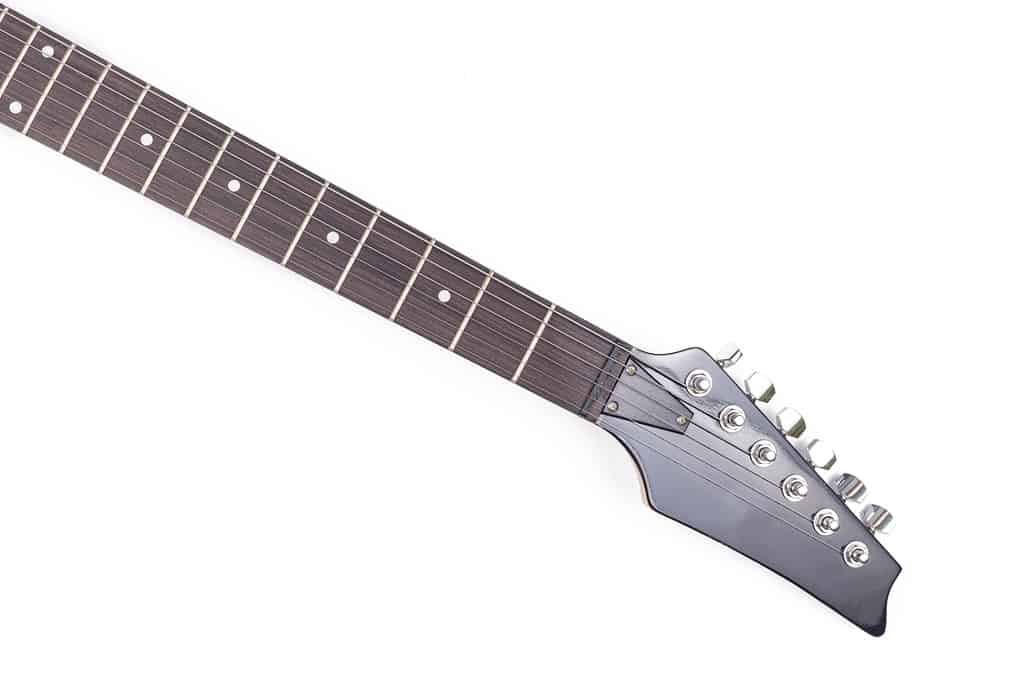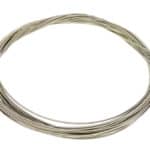The scale length of a guitar is something many people struggle to understand completely.
I know because I was one of those until very recently.
The longitude of a guitar’s neck has many effects on its playability, tone, and even feel.
But coming back to that last claim: Does guitar scale length really affect tone? Here is a short answer:
Scale length has a noticeable effect on tone. Longer scaled guitars sound brighter and have a tighter low end. This is due to the extra room harmonics and overtones have on the neck. Shorter scaled guitars tend to sound warmer and have muddier lows. For playability, longer scales mean higher string tension.
For those who want to dive deeper into this topic, in this article I will talk about scale’s effect on tone and playability.
After that, I will mention the most common guitar scales there are and describe them briefly.
Also, I will try to answer some of the most frequent questions related to neck longitude along the way.
Finally, I will give you my conclusions and recommendations about what I think is most important when picking a new guitar in relationship with its scale length.
Are you ready to get started?
Let’s go!
What is scale length in a guitar?
Scale length refers to the portion of the string that vibrates freely between the nut and the bridge saddle. There are a few different common lengths used among manufacturers, and it affects many important factors of the instrument such as string tension, tone, feel, and playability.
Does a guitar’s scale length affect its tone?
A guitar’s scale length has actually a noticeable impact on its tone. You see, the longer you go, the more room to breathe harmonics and overtones have. This makes for longer-scale guitars such as Fenders sound brighter. On the contrary, shorter-scale guitars, such as Gibsons, tend to sound a bit warmer.
Bass notes are known to sound tighter on longer scale lengths, also.
How much does a guitar’s scale length affect its tone?
Quantifying how much of an impact a single feature of an instrument has on its overall tone is a very difficult task.
It would require extensive scientific research to arrive at contrastable conclusions.
I can’t offer you that, but what I can offer you is empirical evidence based on the experience and opinions of many players.
The impact of a guitar’s scale on its tone is noticeable, however, it is particularly hard to do A/B testing with this feature to get a clear feel for it.
Scale length is something that defines much more than tone, though, and a feature that many players consider one of the most important on an instrument.
Does a guitar’s scale length affect its playability?
Scale length has a big influence on an instrument’s playability. It takes a leading role in defining string tension: The longer the scale length is, the more tension strings will have, and the harder bends will be. Also, the gaps between frets will be longer, a feature that players with big hands enjoy.
How much does a guitar’s scale length affect its playability?
Along with string gauge and tuning, scale length will define how much force you will have to exert over your strings to bend them and even fret them. Extra tension makes bending harder but improves intonation since it makes it harder for the player to apply excessive force when playing.
Scale is the only one from this trinity of factors that is set in stone. You can change the tuning and string gauge of your guitar easily, but you will have to take into consideration the effect scale length has on the equation before choosing a guitar.
Most common guitar scale lengths and some models that use them
These are some of the most common scale lengths for guitars and some models that use them:
24″ (610mm)
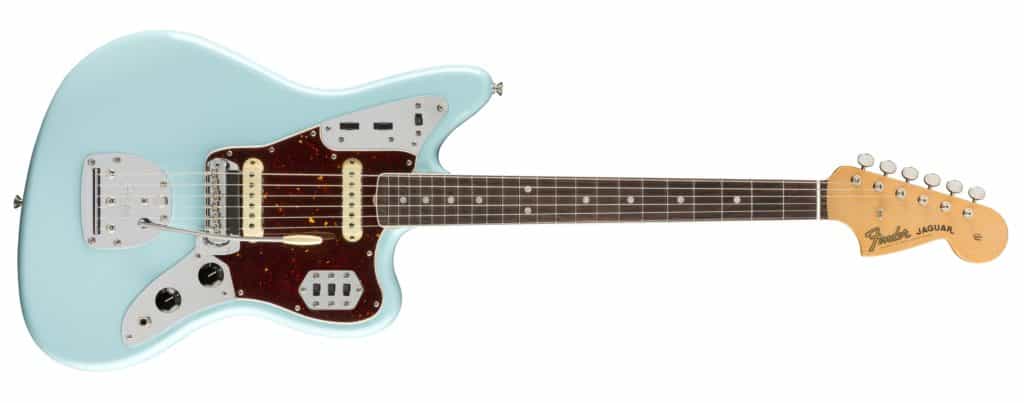
Found in: Fender Jaguar, Fender Mustang
24.5″ (622mm)
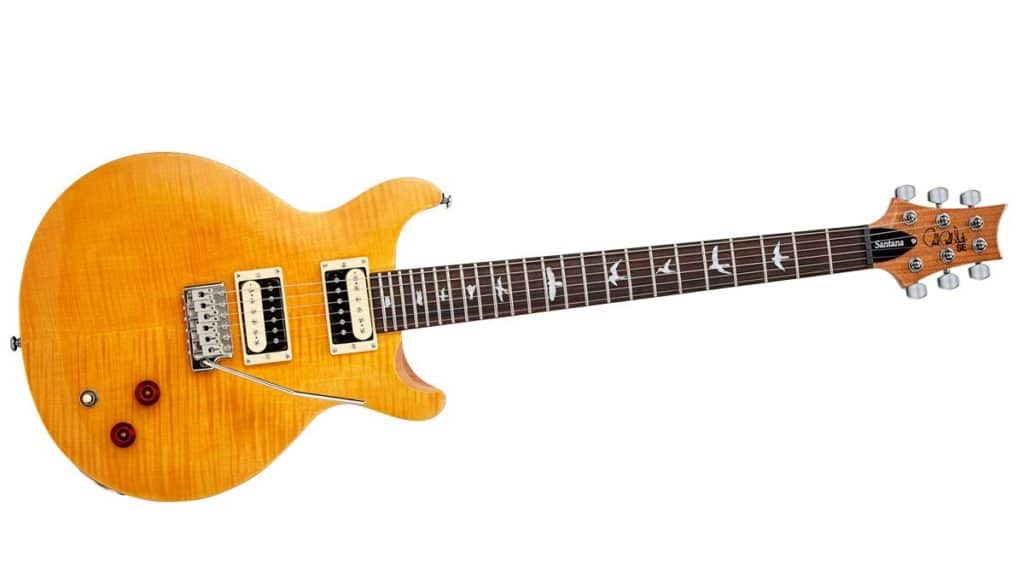
Found in: Paul Reed Smith Santana Signature series
24.75″ (628mm)
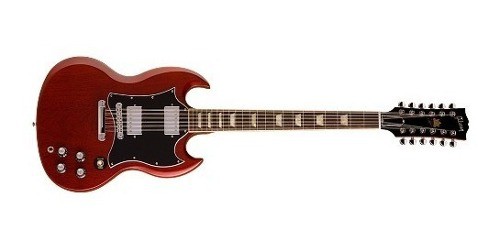
Found in: Most Gibson and Epiphone models
25″ (635mm)
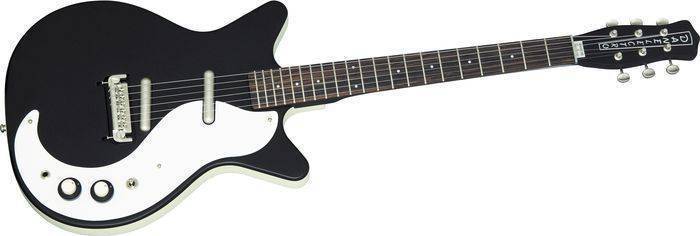
Found in: most PRS, Carvin, and Danelectro models
25.5″ (648mm)
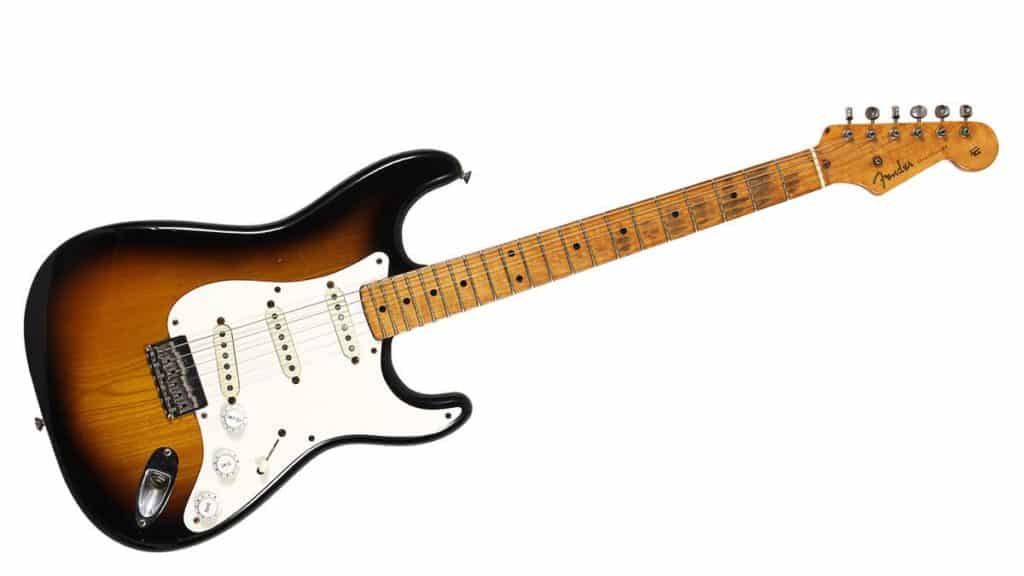
Found in: most Fender, Ibanez, Jackson, Kramer, Schecter, Squier, and Steinberger models
26.5″ (673.2mmm)

Found in: most 7 string models by Ibanez, Jackson, and Schecter
27-30″ (686 – 762mm)
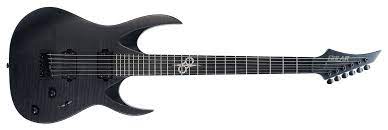
Found in: Baritone guitars, 8, and 9 string guitars
34″ (863.6mm)

Found in: Standard for bass guitars
What are multiscale guitars and how is their playability?
Multiscale or fanned fret guitars are a more modern design that, as the name implies, incorporate multiple scales for different strings. Most commonly having longer scales on the lower strings. This allows for a tighter bass response on the low strings and an easier bending experience on the high ones.
It’s the best of both worlds, it also helps to maintain coherent tensions across strings when using drop tunings.
All of this is achieved by slanting the bridge and the nut in opposite directions, resulting in consistently decreasing string lengths from thicker strings to thinner strings.
How do you measure scale length?
Scale length is measured from the nut to the saddles at the bridge. Also, the 12th fret of the guitar is always placed at the exact middle point of the total string length to allow for the best intonation possible.
Are longer scaled guitars harder to play?
Longer scaled guitars are not necessarily harder to play, however, with the same tuning and string gauge, they will have more string tension. This is determining factor for how the instrument feels, and some players will find it less comfortable. This can be compensated by lowering the string gauge or tuning.
In my opinion, beginners will probably have an easier time with shorter scale lengths, especially if they are younger and have smaller hands.
However, this is not a factor by which you should define the purchase of an instrument for a novice. It’s not that drastic of a hurdle to get used to.
Which scale length is better for bending?
Shorter scale lengths such as 24’’, 24.5’’, or 24.75’’ will allow for the strings to have less tension and make bending easier on the hands of the player. Guitars like the Mustang, Jaguar, or those from PRS and Gibson are great for this due to their shorter scales.
Does scale length affect tuning?
Scale length doesn’t have an impact on tuning per se, however, longer scale lengths work with more string tension than shorter ones to get the same tuning. High tension could cause neck relief, hurting intonation. Low tension could make strings very sensible to hard picking also affecting their intonation.
Higher string tension, on the other hand, will work in favor of preserving better intonation since it will make it harder for the player to overpressure the string when fretting, shifting its pitch involuntarily.
Is a shorter scale length guitar easier to play?
Shorter scale length guitars will be particularly easier to practice bending due to their reduced string tension in standard tuning. However, other than this there are no other noticeable benefits in playing “difficulty”, although their smaller frets might be more comfortable for small hands.
Which guitar scale length is better?
There is no guitar scale length better than the other. It will depend on the player and their preferences. Guitarists that bend a lot will go with shorter scales, or maybe they would prefer to have the fight the instrument a bit with a longer scale length. Nothing is set in stone, and everything is valid.
You should try as many different scaled guitars as you can to determine which one feels best for you, and stick with it.
Or hey, maybe you might enjoy having different guitars with different scale lengths to add variety to your arsenal.
What is the normal scale length of a guitar?
There is no normal scale length for guitars, however, the most common ones are 25.5’’ and 24.75’’ due to Fender and Gibson using them for most of their instruments respectively. 24.5’’ is also becoming very popular among guitar makers such as PRS, and for metal, longer scales and multi scales are king.
Is scale length important for a guitar?
Scale length is a very important factor for a guitar, since it defines many things, from tone to playability, feel, and even the overall size of the instrument. It is, in my opinion, not a strongly defining factor when picking up an instrument, because it’s something that defines the guitar on itself.
I wouldn’t turn down a Gibson Les Paul because I prefer a longer scale length, or I wouldn’t get a Strat made with a shorter scale to get easier bends.
I like the traditional models the way they were conceived. For new experiences, I will probably gauge the overall feel of the instrument and determine the preferred scale length based on the sound I pretend to get from it.
Conclusions and recommendations
Whether you are looking for a new guitar or planning on building or having one built, getting to know, at least at a high level how scale length work is, in my opinion, something that will help you make a better informed final decision.
However, here in GearAficionado, I always say that you should try out every instrument before buying it if you have the chance.
I don’t think anyone can really understand the sound and feel of all these different scale lengths without getting to try them live. At least try the ones that you think might work out better for you.
If it’s within your reach, try to get to play completely different guitars to clearly understand where the variation lies, and then start checking out ones closer to the one you preferred the most.
Finally, don’t forget to have fun. Technicalities for some people get the joy out of getting a new piece of gear. You don’t have to know it all about something that makes you smile. Just go and play the instrument that feels best to you.

Hello there, my name is Ramiro and I’ve been playing guitar for almost 20 years. I’m obsessed with everything gear-related and I thought it might be worth sharing it. From guitars, pedals, amps, and synths to studio gear and production tips, I hope you find what I post here useful, and I’ll try my best to keep it entertaining also.

